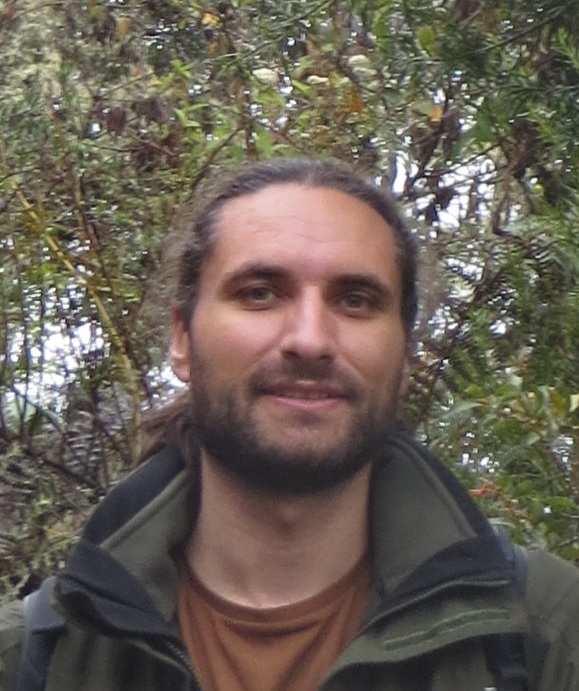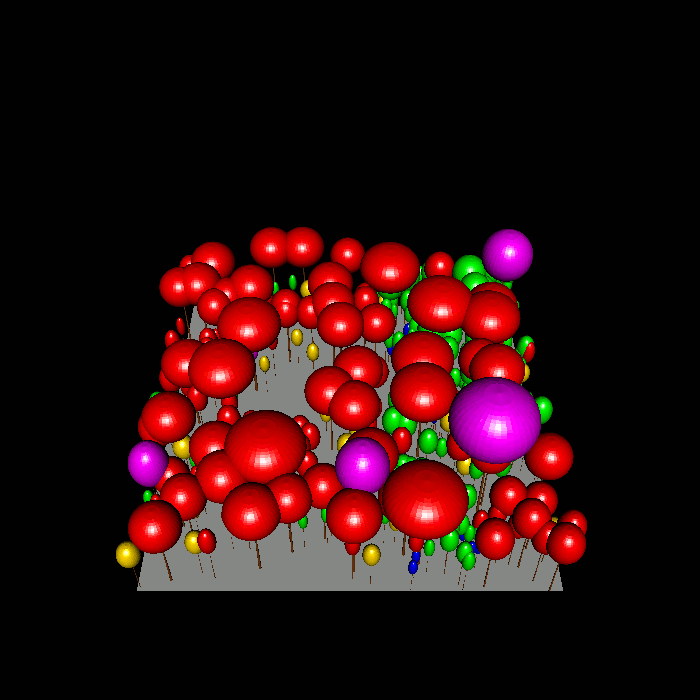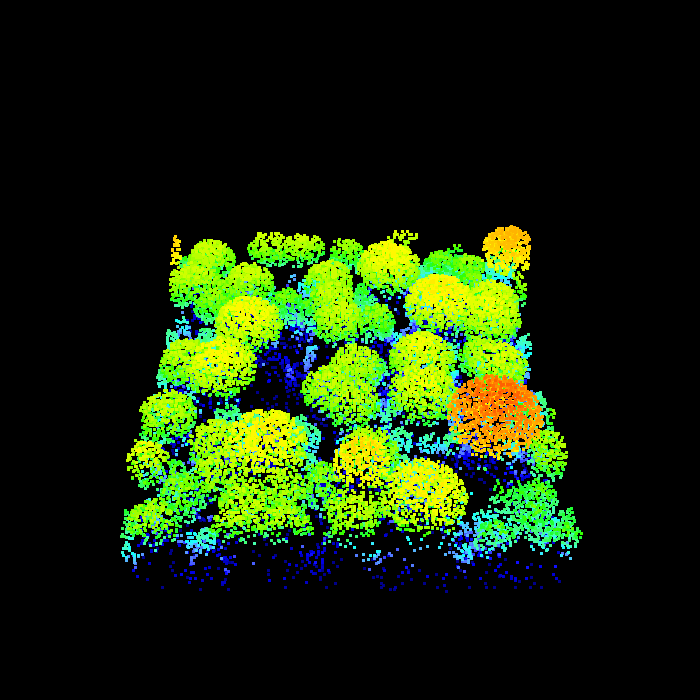Nikolai Knapp
Contact
Nikolai Knapp
Department of Ecological Modelling
Helmholtz Centre for Environmental Research - UFZ
Permoserstr. 15
04318 Leipzig
Since 2021:
Nikolai Knapp
Thuenen Institute of Forest Ecosystems
Alfred-Möller-Str. 1
16225 Eberswalde
E-mail:
nikolai.knapp@thuenen.de

Research
Since 2021, I am working at the Thuenen Institute of Forest Ecosystems, where I am responsible for the coordination and data analysis of the German crown condition survey ( WZE ) within the ICP forests monitoring program. My research is about modeling tree vitality and mortality by integrating field data, remote sensing, machine learning and process models.
From 2015 to 2021 at UFZ, my main research focus was on the following topics:
My research interest
is about linking the fields of remote sensing and forest modelling. Lidar and radar remote sensing allow us to measure forest structures at large scales.
Dynamic forest models, like
FORMIND
, provide tools to study the processes behind the structures.
Combining both improves our understanding of how canopy height structure is
related to above ground biomass and carbon dynamics. The focus lies on tropical
forests. They play an important role in the global carbon cycle, but they are structurally
complex and less well covered by inventories compared to other ecosystems.
Project: Biotrop-X
In this context, I also work on the question of how distributions of different forest attributes, such as biomass, growth and mortality, vary with spatial scale. I use forest models of different complexities to investigate how model parameters can be upscaled to obtain coarse-scale simulation results, which are consistent with aggregated fine-scale simulation results. Upscaling and complexity reduction are important for reducing the computational demand of ecological models.
Project:
Reduced Complexity Models (RedMod)
 FORMIND simulation
FORMIND simulation
 Lidar simulation
Lidar simulation
Publications
Mapping Amazon forest productivity by fusing GEDI lidar waveforms with an individual-based forest model
Remote Sens. 13 (22), art. 4540 10.3390/rs13224540
Challenges to aboveground biomass prediction from waveform lidar
Environ. Res. Lett. 16 (12), art. 125013 10.1088/1748-9326/ac3cec
Benchmarking airborne laser scanning tree segmentation algorithms in broadleaf forests shows high accuracy only for canopy trees
Int. J. Appl. Earth Obs. Geoinf. 123 , art. 103490 10.1016/j.jag.2023.103490
Aboveground biomass density models for NASA’s Global Ecosystem Dynamics Investigation (GEDI) lidar mission
Remote Sens. Environ. 270 , art. 112845 10.1016/j.rse.2021.112845
Lessons learned from applying a forest gap model to understand ecosystem and carbon dynamics of complex tropical forests
Ecol. Model. 326 , 124 - 133 10.1016/j.ecolmodel.2015.11.018
Remote sensing measurements of forest structure types for ecosystem service mapping
In: Schröter, M., Bonn, A., Klotz, S., Seppelt, R., Baessler, C. (eds.)
Atlas of ecosystem services : drivers, risks, and societal responses
Springer International Publishing, Cham, p. 63 - 67 10.1007/978-3-319-96229-0_11
The relevance of forest structure for biomass and productivity in temperate forests: New perspectives for remote sensing
Surv. Geophys. 40 (4), 709 - 734 10.1007/s10712-019-09519-x
Using airborne LiDAR to assess spatial heterogeneity in forest structure on Mount Kilimanjaro
Landsc. Ecol. 32 (9), 1881 - 1894 10.1007/s10980-017-0550-7
allodb: An R package for biomass estimation at globally distributed extratropical forest plots
Methods Ecol. Evol. 13 (2), 330 - 338 10.1111/2041-210X.13756
Remote sensing of forests: analyzing biomass stocks, changes and variability with empirical data and simulations
Dissertation, Universität Osnabrück
PhD Dissertation 3/2019
Helmholtz-Zentrum für Umweltforschung - UFZ, Leipzig, XI, 161 pp.
A question of scale: modeling biomass, gain and mortality distributions of a tropical forest
Biogeosciences 19 (20), 4929 - 4944 10.5194/bg-19-4929-2022
Structure metrics to generalize biomass estimation from lidar across forest types from different continents
Remote Sens. Environ. 237 , art. 111597 10.1016/j.rse.2019.111597
Linking lidar and forest modeling to assess biomass estimation across scales and disturbance states
Remote Sens. Environ. 205 , 199 - 209 10.1016/j.rse.2017.11.018
Tree crowns cause border effects in area-based biomass estimations from remote sensing
Remote Sens. 13 (8), art. 1592 10.3390/rs13081592
Model-assisted estimation of tropical forest biomass change: a comparison of approaches
Remote Sens. 10 (5), art. 731 10.3390/rs10050731
From small-scale forest structure to Amazon-wide carbon estimates
Nat. Commun. 10 , art. 5088 10.1038/s41467-019-13063-y
Computer and remote-sensing infrastructure to enhance large-scale testing of individual-based forest models
Front. Ecol. Environ. 13 (9), 503 - 511 10.1890/140327
Deriving tree size distributions of tropical forests from lidar
Remote Sens. 13 (1), art. 131 10.3390/rs13010131
CV
| since 2021 | Scientist at Thünen-Institute of Forest Ecosystems and guest scientist at UFZ |
| 2019 - 2021 | Scientist at UFZ working for the RedMod project |
| 2015 - 2018 | PhD student at UFZ working for the Biotrop-X project |
| 2015 | Research assistant in the REDD+ monitoring group of the Peruvian ministery of environment in Lima |
| 2012 - 2014 | Forest Information Technology studies (MSc.) at HNE Eberswalde and SGGW Warsaw |
| 2006 - 2012 | Biology studies (Diploma) at University of Würzburg (Tropical Ecology, Bioinformatics, Vegetation Ecology, Biotechnology) with research stays at University Via Domitia Perpignan (2010) and University of Brunei Darussalam (2011) |
Teaching
-
UFZ Winterschool Ecological Modelling
:
Grid- and individual-based dynamic models and C++ programming -
Collection & Analysis of Lidar Data
, HNE Eberswalde:
Lidar and spatial data processing in R
